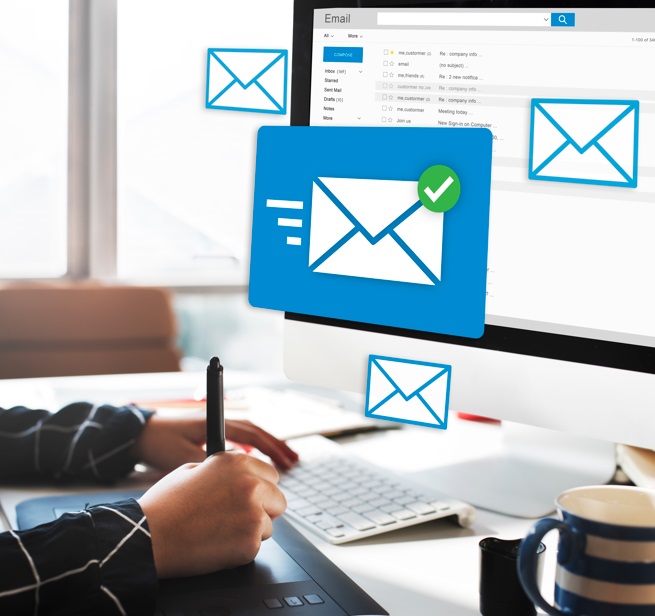Answer
The best email tracking tools enable marketers to monitor, analyze, and optimize their campaigns.
Your chosen tool must have these features and capabilities:
- Real-Time Tracking
- Email Deliverability Monitoring
- Subscriber Engagement Metrics
- A/B Testing Capabilities
- Integration with Other Marketing Platforms
- Advanced Analytics and Reporting
Key Takeaways
Choose an email tracking tool that empowers you to:
- Craft more engaging emails after gathering valuable audience preferences and behavior insights.
- Optimize your send times by studying open rates and scheduling emails for highly-engaged recipients.
- Enhance campaign performance by identifying areas for improvement and refining your email marketing strategy over time.
Here’s a fun fact: Despite the rising popularity of other media types, like video or audio messages, some 333 billion electronic emails were exchanged daily in 2022. This proves that emails continue to be the main mode of communication—especially for marketers. (1)
However, only some messages generate a successful click, open, or conversion. Learning the whys and hows of a successful email campaign is crucial.
If launching an email campaign feels more like a guessing game than a targeted and results-oriented marketing activity, we’ve got you. In this guide, we’ll explore the essential features of email tracking tools and help you find the best one for your business.
What Are Email Tracking Tools, and How Do They Work?

Emails are indispensable in every marketing professional’s arsenal for a good reason. The return on investment for email marketing is USD $36 for every dollar, according to HubSpot, which also said that marketers send two to three emails daily on average. (2)
Email tracking tools are software applications that automate and add functionalities to your current email platform. Their main goal is to monitor recipient behavior, making them great lead generation tools. In essence, these platforms give you a behind-the-scenes look at what happens after you hit “send.”
Here’s how an email tracking software typically works:
Inserting tracking pixel or unique identifier
An email tracking tool embeds a pixel or unique identifier into the email’s Hypertext Markup Language (HTML) code, which records recipient interactions and sends the data to the sender.
Monitoring recipient interaction
The content, tracking pixel, or unique identified loads when the recipient opens the email. This action triggers a request to the tracking server, indicating the email has been opened.
Recording server response
The tracking server logs the event, recording the time, date, and location (if available) of the opened message. This information is stored in the email tracking software’s database.
Data analysis and reporting
The email tracking software aggregates the data collected from email opens, clicks, and other interactions. This data can include email metrics such as:
- Open rates
- Click-through rates
- Engagement trends
- Subscriber behavior
Many solutions offer real-time monitoring capabilities, sending notifications with every recipient action.
Privacy compliance
However, data privacy is one consideration companies should think about when tracking customer behavior. Data privacy concerns play a big role in consumers’ purchasing decisions. A 2022 study revealed that 85% of consumers want to know the company’s privacy policies before transacting. (3)
Beyond easing individual concerns, the best email tracking tools must comply with privacy regulations. Senders should obtain consent from recipients, provide clear privacy policy information, and enable recipients to opt out of being tracked at any time.
Organizations engaged in this marketing method must choose secure email tracking software and use private cloud infrastructure to safeguard customer data. Unlike the public cloud, where computing resources are shared by multiple users, a private cloud environment is controlled and utilized by a specific organization, minimizing the risks of security issues.
It’s best to learn more about how data security in the cloud works before choosing the right option for your business.
What Are the Must-Have Features of an Email Tracking Tool?
By now, you’ve already realized that email messaging tracking tools provide a goldmine of consumer data. But their true value lies in the actionable email tracking insights they unlock.
Here are the key features and advanced email tracking capabilities to watch out for:
Core functionalities
Your email tracking tool should provide insightful data on how your recipients interact with your messages. At the minimum, they must gather these crucial datasets:
Open rate tracking
The open rate is one of the most critical metrics for any email campaign. It reveals the percentage of recipients who opened your email. Top-notch email tracking services provide detailed information on read receipts, including the recipient’s name, email address, and the exact time and date they opened your message.
Click-Through Rate (CTR) recording
Opens are great, but the real goal is to drive action, whether purchasing, signing up for a webinar, or downloading a resource. CTR shows how many recipients clicked on a link within your email.
This crucial email tracking feature lets you identify your most compelling content and optimize your campaigns accordingly. It also helps you identify issues. For example, a low CTR could signal a lack of compelling content or poorly placed CTAs (calls to action).
Deliverability monitoring
Even the most well-crafted email campaign is only useful if it reaches your audience’s inboxes. A good email tracking tool can track bounces, spam complaints, unsubscribe rates, and other factors impacting your ability to land in the inbox.
With this data at your fingertips, you can proactively improve your deliverability. This could include cleaning your email lists, adjusting your sending frequency, or optimizing your content for spam filters.
Detailed reporting and analytics
Advanced tools offer in-depth reports with visualizations, allowing you to analyze trends, identify top-performing emails, and pinpoint areas for improvement. Comprehensive reporting features let you compare variables, like open rates, across different send times or subject line variations.
Let’s say you send out a promotional email campaign. Your tracking tool reveals a low open rate. You also discover that the click-through rate for a specific product link could be better. That said, you can transform your email marketing campaigns based on the following insights:
- Low open rates might indicate subject lines that fall flat or a poorly timed send.
- Besides knowing when to send, these datasets could prompt you to A/B test different subject lines to see which ones grab attention.
- Additionally, you might need to improve the product description or revisit the CTA placement.
These are only a few examples. Imagine what you can do if you have more email tracking features.
Additional Features to Supercharge Your Strategy

Learning the essentials is a great way to start. Eventually, you’ll need to explore some advanced features to take your email outreach efforts to the next level:
Link tracking
See which specific links within your email resonate with your audience. This will allow you to tailor future campaigns based on audience preferences.
Real-time notifications
Set your email tracking software to instantly alert you when a key contact opens your message. This empowers you to strike while the iron is hot and send a timely follow-up message when engagement is high.
Location and time tracking
Some advanced tools provide additional context, such as the recipient’s geographic location and the device or mobile app they used to open your email. This allows you to fine-tune your campaigns to target specific audiences or optimize for different devices.
Again, this data should be used with discretion to respect the recipient’s privacy and adhere to regulations like the General Data Protection Regulation (GDPR).
Automation Features to Streamline Your Workflows
Efficiency is key for any busy marketer. Look for tools that integrate seamlessly with your existing email platform and offer advanced features that save you time.
Email scheduling
Schedule emails to send out at the most optimal times for engagement. As an aside, a 2023 survey discovered that engagement was highest on electronic messages sent between nine in the morning to 12 noon and 12 noon to three in the afternoon. In another survey, 27% of U.S. marketers claimed that marketing emails sent on Monday received the most engagement; meanwhile, 19% said Monday, and 17% said Thursday. (4)
Automated follow-ups
Never miss a golden opportunity again. Set up automated follow-up emails based on recipient behavior (e.g., if they still need to open the initial email). This keeps your brand at the forefront of their mind and increases the chance of conversion.
Team collaboration
Collaboration tools are great, especially for larger marketing and sales teams. Look for an automation tool that allows team members to share email tracking data, discuss campaign performance, and collaborate to optimize future email outreach strategies.
Advanced Tracking Features for Personalization and Engagement
Today’s consumers crave personalized experiences. Estimates suggest that companies are spending more than 50% of their marketing budgets for personalization, driving customer personalization software revenues to USD$ 9.5 billion in 2024. (5)
This means open rates and click-throughs are just the tip of the iceberg regarding email engagement metrics. Advanced email tracking tools must integrate with other platforms to comprehensively understand how your audience interacts with your messages.
A/B Testing
Test different subject lines, email copy variations, and CTAs to see what resonates best with your audience. The best email tracking tools can offer valuable data to help you identify the winning formula.
Heatmaps and scroll tracking
These advanced features visually represent where recipients click within your email and how far they scroll down. This can expose areas of your email that might get skipped and help you optimize the layout and content for maximum impact.
Device tracking
Knowing whether recipients are opening your emails on desktop, mobile, or tablet allows you to tailor your content accordingly. For instance, image-heavy emails might not render well on mobile devices, so it’s best to include a mobile-friendly version.
Integrations with marketing automation platforms
Connect your email tracking tool with your marketing automation platform to create campaigns based on recipient behavior. Imagine automatically sending targeted follow-up emails based on whether a recipient clicked on a specific link or opened a particular email. This level of automation personalizes the customer journey and boosts campaign effectiveness—allowing you to lead them closely through the sales pipeline.
For example, if a recipient opens your email about a new product launch but doesn’t click on the “Learn More” button. Your marketing automation platform, which is integrated with your email tracker, can automatically send a follow-up message with a video demonstration of the product, addressing potential concerns identified from the initial email.
Mail merge compatibility
You can also personalize emails at scale by integrating your tracking tool with your customer relationship management (CRM). Using this feature lets you customize subject lines and greetings and offer relevant content based on recipient data.
Engagement with subsequent emails
This might not be a direct email metric, but it can be informative. If recipients consistently open and click on your emails, it’s a strong sign they find your content valuable—regardless of how long they spend reading each message.
Security and Privacy
As mentioned, it’s crucial to consider the ethical implications of email tracking before diving in. Note that wide-reaching and state-specific rules govern data and mail privacy protection. As a responsible marketer, you must follow applicable regulations.
Here are some key security and privacy aspects to keep in mind:
Data security
Ensure your chosen email tracking tool employs robust security measures to protect sensitive recipient data, even if you’re sending a cold email. Look for features like two-factor authentication and encryption.
Compliance with regulations
Make sure your email tracking tool adheres to applicable privacy regulations and offers mechanisms for recipients to opt out of tracking, as earlier mentioned.
Transparency
Be upfront with your audience about using email tracking. Include a clear explanation in your privacy policy, and consider offering an unsubscribe option for tracking specifically.
Being transparent and prioritizing data security is crucial to adopting ethical and responsible marketing. They also build trust with your audience, which is paramount for small businesses or startups seeking to boost sales engagement.
Choosing the Right Email Tracking Tool
Selecting the best email tracking software depends on your specific needs and budget. After setting your marketing goals, examining pricing plans, and knowing which features you need, consider equally important factors such as:
Team size

Solo marketers might find a free or basic plan sufficient. At the same time, larger teams will benefit from features like team collaboration and advanced analytics offered by premium plans.
Email volume
If you send high volumes of emails, ensure the tool can handle the load efficiently. It’s best if your software has unlimited email tracking capabilities.
Free vs. paid plans
Some providers offer free tracking tools with limited capabilities. A paid software or service is recommended to optimize your email campaigns.
You don’t have to rush into getting one. Some providers offer a free 30-day trial. Test-drive different tools to see which one feels most intuitive and provides the most valuable features for your marketing efforts.
Final Thoughts
A key part of any successful marketing plan is getting to know your audience well. If you want to make campaigns that get results, you need email tracking software.
On the other hand, not every platform is made the same. You should know about these must-have features when looking for the best email tracker.
By using these tools, you can learn about the likes, dislikes, actions, and participation of your audience. Even more importantly, be open to change. If you keep making small changes to your strategies based on these insights, you will see huge increases in the numbers.
References
1. ‘Number of sent and received emails per day worldwide from 2017 to 2026’. Source: Statista
2. Kirsch, Katrina. ‘The Ultimate List of Email Marketing Stats for 2023’. December 14, 2023. Source: Hubspot
3. “What is personalization?’ Source: Mckinsey (see first paragraph of page 4)
4. Needle, Flori. ‘The Best Time to Send an Email (2023 Research)’. October 31, 2023. Source: Hubspot
5. Dencheva, Valentina. ‘Marketing personalization worldwide—statistics and facts’. December 18, 2023. Source: Statista






